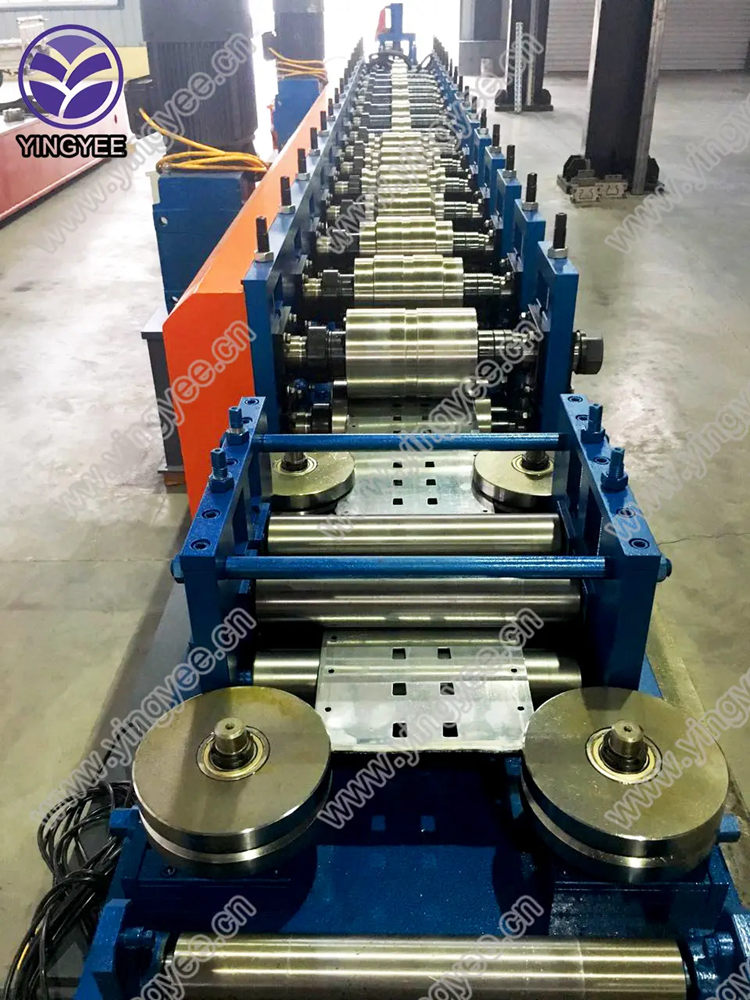
Understanding the Steel Downpipe Roll Former Making Machine
In the burgeoning construction and manufacturing industry, the demand for efficient and reliable equipment plays a vital role in the production process. Among various machines that facilitate the manufacturing of products, the steel downpipe roll former making machine stands out due to its specialized capability of producing high-quality downpipes from steel sheets. This article delves into the functionality, significance, and advantages of this innovative machinery in the modern industrial landscape.
What is a Steel Downpipe Roll Former?
A steel downpipe roll former is a type of machinery designed to transform flat steel sheets into cylindrical or rectangular downpipes through a series of automated processes. The machine operates by feeding raw steel coils into the system, which then utilizes a series of forming rollers to gradually shape the material into the desired profile. The final product is tailored to be used for the efficient drainage of rainwater and other liquids from roofs, ensuring effective management of water flow in buildings.
Key Components of the Machine
1. Uncoiler This part holds the steel coils in place as they are fed into the machine. It ensures a smooth transition of material for uninterrupted production.
2. Roll Forming Stations The heart of the machine, these stations consist of multiple rollers that gradually shape the steel sheet into the downpipe profile. Each station is meticulously designed to ensure precision in forming, resulting in a quality output.
3. Cutting Mechanism Once the desired length of downpipe is achieved, the cutting mechanism automatically trims the material to size. This ensures uniformity and reduces material waste.
4. Control System An integral component of modern roll formers, the control system is typically computerized, allowing for precise adjustments in speed, length, and profile requirements. This automation boosts efficiency and reduces the likelihood of human error.

Benefits of Using a Steel Downpipe Roll Former
1. Efficiency The automation involved in roll forming significantly increases production speed while minimizing labor costs. This is crucial in meeting the soaring demand for downpipes in construction projects.
2. Customization Manufacturers can easily adjust the machinery to create various profiles and sizes of downpipes, catering to specific customer requirements and enhancing versatility in production.
3. Quality Assurance The precision engineering involved in roll forming ensures consistent quality and accurate dimensions. This translates to fewer defects and returns, which positively impacts the bottom line.
4. Material Utilization The process minimizes waste compared to traditional methods of ducting production. The ability to work with steel sheets effectively reduces scrap material, leading to cost savings and a more environmentally friendly operation.
5. Robustness and Durability Steel downpipes produced via this method possess robust characteristics due to the nature of the material and the manufacturing process. This makes them ideal for various applications, including residential, commercial, and industrial settings.
Conclusion
The steel downpipe roll former making machine is a vital asset in the manufacturing industry, delivering efficiency, quality, and adaptability. Its advanced technology not only ensures high productivity levels but also meets the diverse needs of the construction sector. As the demand for effective drainage systems continues to grow, investing in a steel downpipe roll former presents a compelling opportunity for manufacturers aiming to enhance their production capabilities and deliver superior products.
In summary, the roll former reflects the evolution of engineering technology, making it an indispensable component in modern construction practices. By adopting such advanced machinery, industries can significantly improve their operational efficiency and contribute positively to the ever-evolving landscape of construction and infrastructure development.